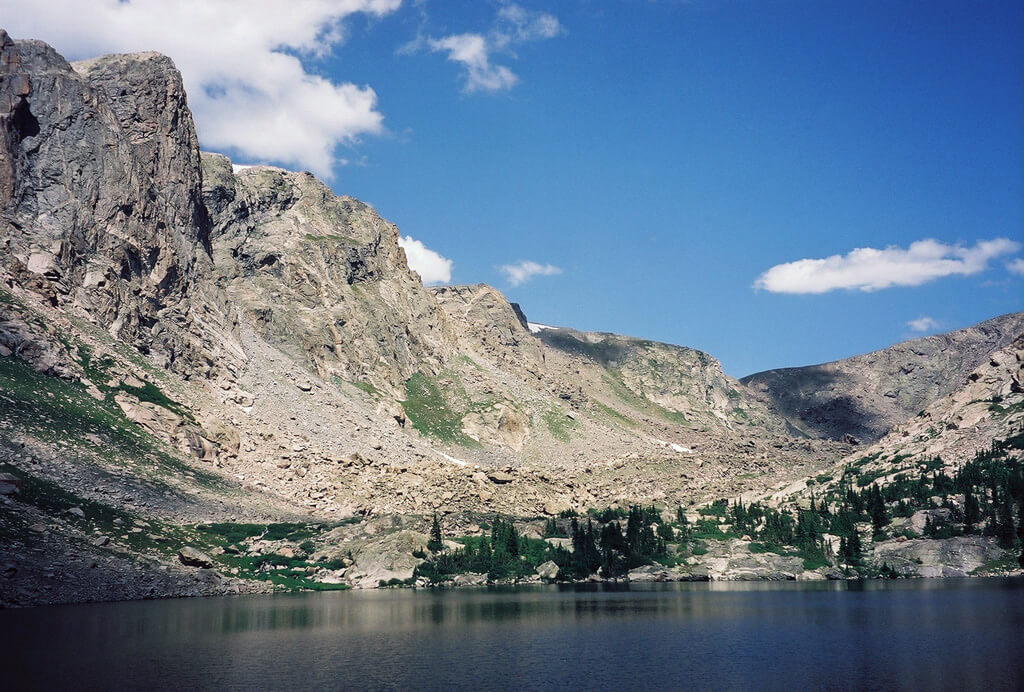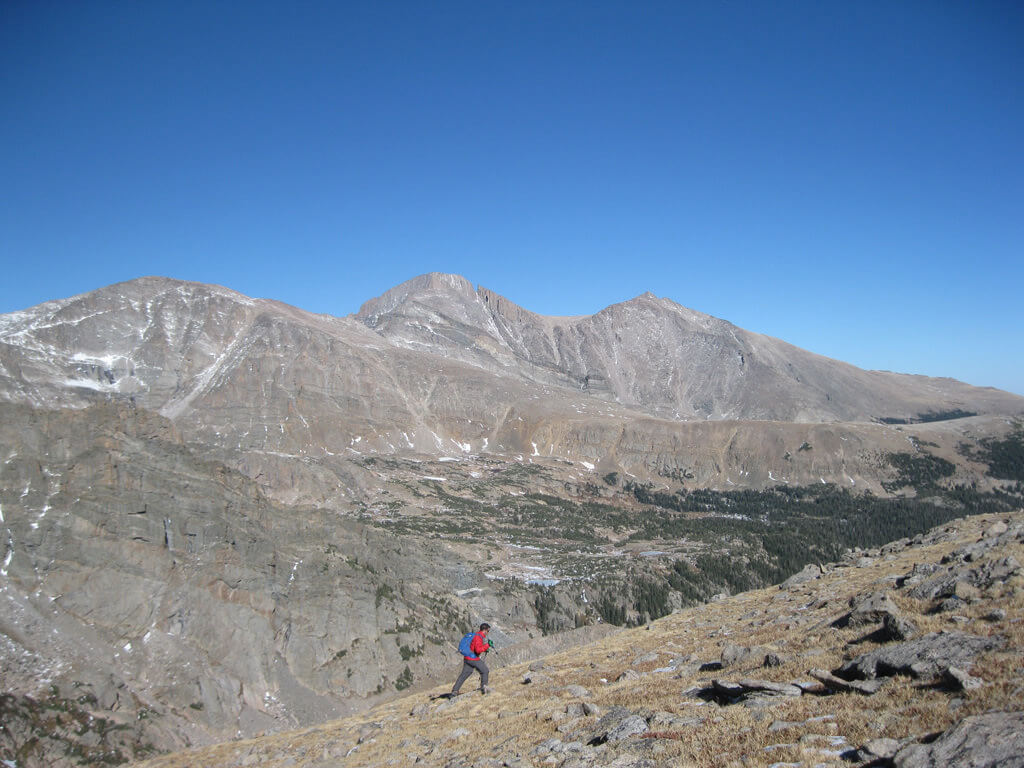Backpacking in Rocky Mountain National Park: An Insider’s Guide
If ever there was a dream location to backpack, Rocky Mountain National Park (RMNP) is it. There are 120 (!) designated backcountry campsites in the park and countless ways to link them together. Backpackers come for the photo opportunities, fishing, peak bagging, or simply to wander into the wilderness and soak in the solitude. Crowds dissolve along trails that plunge into the heart of the park and there are many sections, such as the eastern flanks of the Never Summer Mountains in the northern reaches of the park, that are removed from the busy tourist traffic that descends upon the popular areas every summer.
Note that for any trip to RMNP’s backcountry, you’ll need to register for a permit and pay a $26 fee (for each trip, not per person). You can begin plotting your adventure on the National Park’s website, where there will be details on reservations and schedules. Campers will need to bring bearproof containers for their food.


Mirror Lake, a peaceful backcountry destination. - Bill Reed
For a true wilderness experience, Mirror Lake is a wonderful place to visit. It’s 6.6 miles one-way (13.2 miles round trip) to this exquisite lake. Surrounded by the towering Mummy Range mountains, the trail is straightforward and well-maintained, with several bridge crossings. The serene pine forest here is home to a lot of the park’s more reclusive wildlife, so bring your camera and your bear bells. If you arrive at the lake on a quiet, windless afternoon, you can reflect upon how this placid alpine lake got its name.
If it’s a grand west-to-east tour you’re looking for, a 2 -3 day trek from the East Inlet Trail over Boulder Grand Pass to the Wild Basin Trailhead is a memorable and challenging adventure. Since this is a point to point, you’ll have to figure out your vehicle drop off/pick up logistics beforehand.


En route to Boulder Grand Pass with Longs Peaks (center) and Mount Meeker (right) in the background. - James Dziezynski
The route is excellent in either direction, but this description starts at the East Inlet Trailhead. Day one will go 7 - 8 miles to either Lake Verna or Upper East Inlet campsites near Spirit Lake. This trail is also great as an out and back. Because it starts from the less traveled western side of the park, the views here are unique. Many of the well-known mountains take on a different profile from this approach.
Day 2 requires you get off-trail and ascend the slopes above Spirit Lake to Boulder Grand Pass. Peak baggers will have Mount Alice to the north and Tanima Peak to the south as optional summits. Most years, a snowfield persists on the east side of Boulder Grand Pass and there are no established trails down, but the navigation is straightforward though steep (it may be a bit too much for younger kids or casual backpackers). Descend past Lake of Many Winds and eventually to Thunder Lake, where trails to Wild Basin appear. Camp at Thunder Lake or hike out 6.8 miles from the lake. All told, this route is close to 20 miles, depending on how you scale the off-trail portion of Boulder Grand Pass.
For something a little different, why not visit one visit a ghost town right in the park boundaries? Dutchtown and Lake of Clouds can be found on the far western portion of RMNP at the foot of the rugged, boulder-strewn Never Summer Mountains. Dutchtown was gone in a flash—populated from 1879 to around 1884, then sporadically until its final inhabitants left for good before 1900. Cabin ruins and a few relics of the mining days remain. The town itself—only four cabins-big in its prime—was an outpost for exiles from the more vibrant but equally short-lived Lulu City. Once the silver ran out, the town was abandoned.
The hike in starts from the Colorado River trailhead via the Red Mountain Trail. It’s a scenic six miles to the lone campsite—so if you reserve this one, you’ll have the place to yourself. There is no trail to Lake of the Clouds but the navigation is easy. Compared to the rolling peaks of the central park, the Never Summer Range seems to float on a river of talus, with hastily chiseled peaks still retaining sharp points and jagged towers. Peakbaggers can aim for the scrappy summits of Mount Cirrus and Howard Mountain from this basin—but they’ll have to work for the top. The rock is often loose, with some exposed scrambling, which is perfect for those looking for a rugged addition to their backpacking trip.
This list just covers the tip of the proverbial iceberg when it comes to backpacking in Rocky Mountain National Park. For a comprehensive look at all 120 campsites, with details, maps, and directions check out the excellent National Parks RMNP backcountry page. Many backpackers fall in love with the charm, beauty, and pristine wilderness found in the park, which is truly unlike anywhere else in Colorado. Most return for new adventures time and time again.
